There’s one basic idea behind the choice of Massimo Bottura of signing the new Gucci Osteria in Florence. And it goes beyond the purely culinary. The chef from Modena is in fact the heir of an effort that Gualtiero Marchesi first launched: elevating our cuisine, making it noble, transforming it into a cultural expression tout court. Italy is the best suited place for this task: because it has an endless and unique artistic heritage, as well as a culinary tradition that is also huge, even though it was neglected for a long time, and considered humble, pop, in fact, as one would say these days.
Italian trattorias as opposed to French haute cuisine, in other words; grandeur versus chequered tablecloths and wicker wine bottles: a prejudice that is still popular, especially abroad (how many hotels, under international brands, offer a format that includes restaurants with strictly French fine dining, and then simpler “Italian style” restaurants?), even though we’ve made huge progress in the past few years.
According to
Bottura instead, the
Good in Italy must reach the same importance as the
Beautiful. In order to do so, these elements must speak to each other, they must interact, and blend: just like at
Gucci Osteria. Here
Bottura’s food blends with the great fashion designers from Florence, in a beautiful restaurant overlooking one of the most beautiful squares in the world and in a town that was the cradle of artistic Renaissance. The right project, in the right place, at the right moment.
There’s more:
Bottura pulls the bull by the horns, with reference to what we’re saying. Indeed the new restaurant in Florence is not conceived as a
fine dining place, which would be a second location in any case. The chef isn’t satisfied getting to the top of Mount Everest. He chooses to do so via the most difficult side: so in this parallel between art and cooking, he plays the card of the osteria. It’s as if he said: we’re so excellent that in this extraordinary place we can present not a big restaurant but a contemporary trattoria; indeed, this is enough to validate the comparison with art. Italy is so great (even culinary speaking. And this also refers to a unique Italian product, namely trattorias) that it doesn’t need to copy other restaurant formats. We have all it takes.
Meanwhile,
Gucci started a deep change of image in 2015, when they handed the creative direction to Roman
Alessandro Michele, in a process of restyling that was a clear break with the past. So
Gucci Osteria is immersed in a contemporary Renaissance broth – in terms of building, décor, and even the smallest detail –, in a happy combination in which the luminous past is made up to date. This can be noticed in the pastel colours, the gold finishes, the hand-painted wood floors…
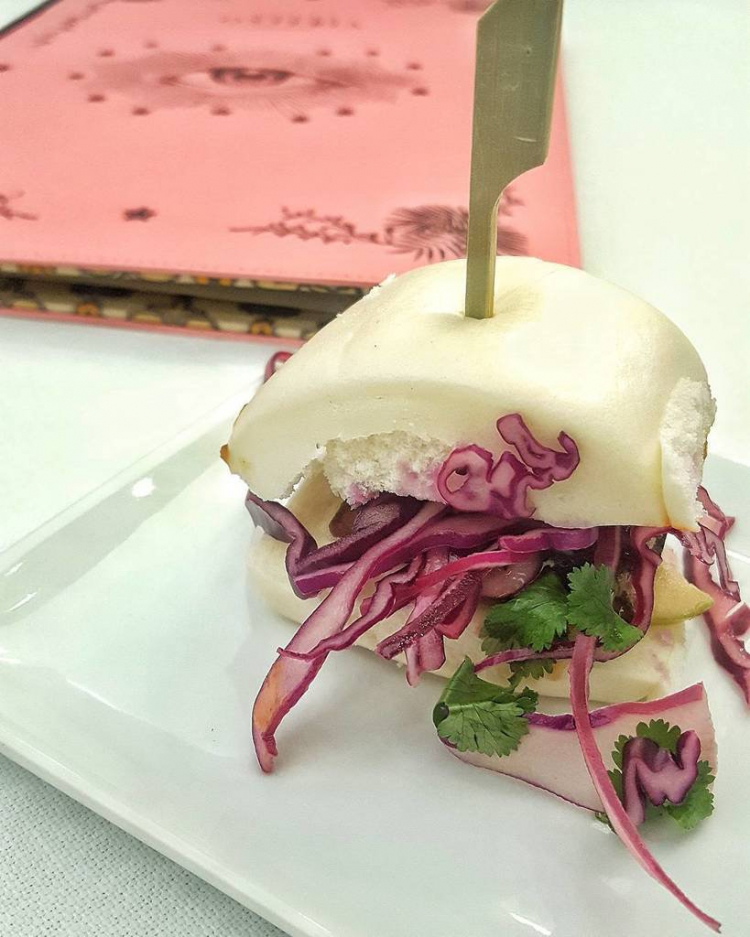
Taka bun: steamed bun, pork belly, miso sauce, marinated coriander, yuzu and raspberry vinegar, hot sauce and green apple. A tribute to Takahiko Kondo, Bottura’s sous chef at Francescana, and husband of the chef at Gucci Osteria, Karime Lopez (photo by Bianca Tecchiati)
It is therefore obvious for
Bottura to conceive a modern version of Italian-style osterias. It goes beyond a pure Tuscan offer. It doesn’t focus on
ribollita and
pappa al pomodoro. Indeed it embraces all of Italy’s tradition (
Tortellini with a cream of Parmigiano Reggiano, Artichoke alla giudia), adding some foreign influences, something he enjoys (
Caesar Salad in Emilia, Hot dog di chianina, Napoli e Marsiglia non sono poi così lontane, that is to say a bouillabasse with mixed pasta,
Tiramisu roll cake) because he’s got a cosmopolitan spirit of his own, and uses tools – cooking, art – that have no borders.
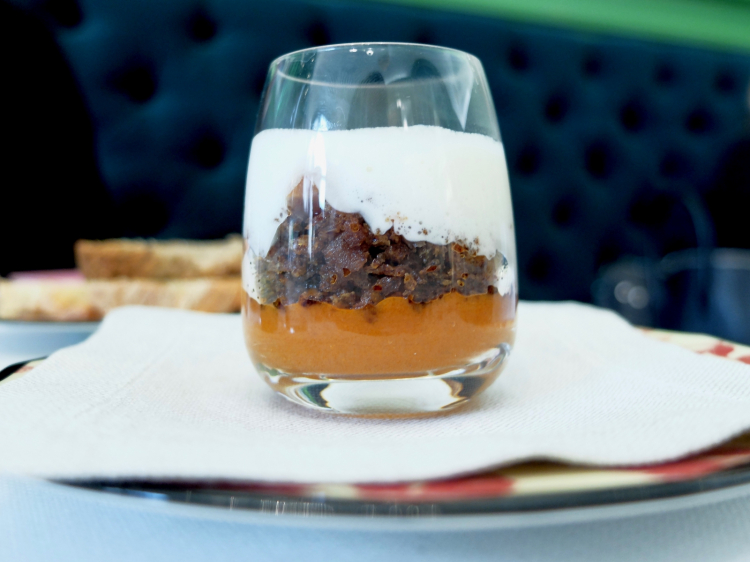
Appetizer: Tomato, bread and cream of Parmigiano. Tanio Liotta is the author of the photos of the dishes
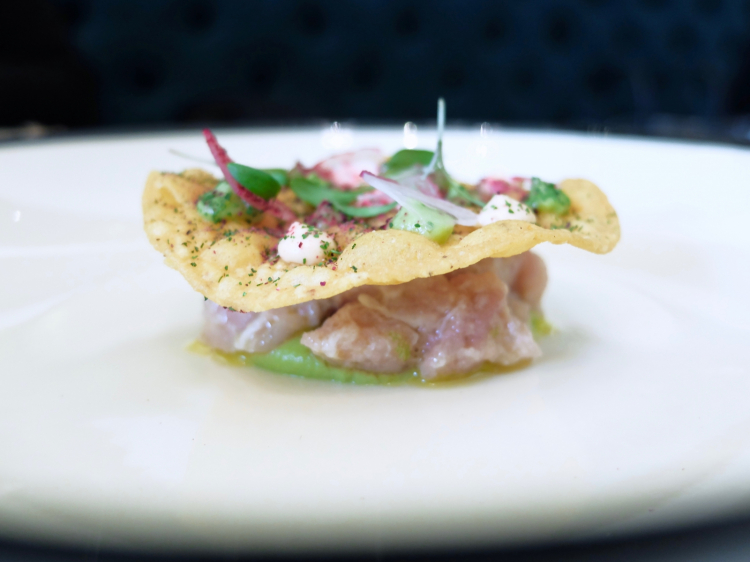
Tostada di palamita: palamita marinated with oil, lime and shallot, corn tostada, chipotle mayonnaise, radish, hibiscus and guacamole
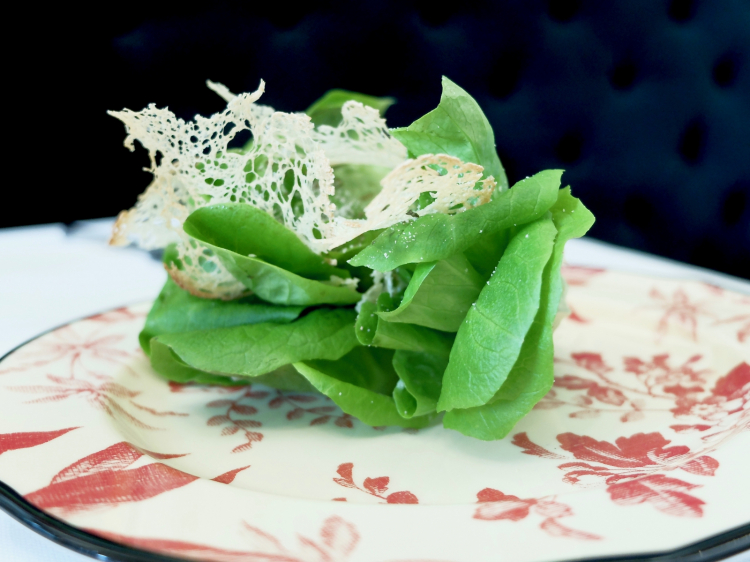
Caesar Salad in Emilia: lettuce, Parmigiano chips, garlic bread, sauce of balsamic vinegar and mayonnaise, anchovies and capers, Caesar dressing
He moves without boundaries:
Tostada di palamita, a hint at Mexico;
Mackerel with ponzu sauce, Japan;
Hot Thai Aubergines; Black cherry cheesecake.
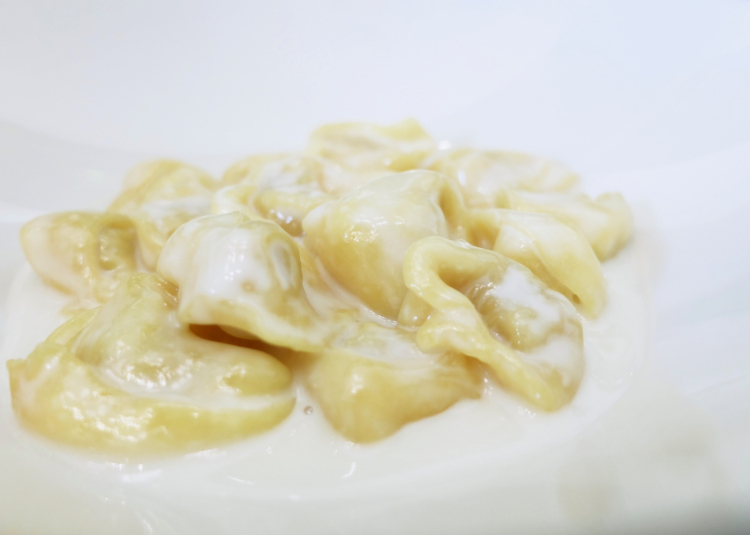
Tortellini in a cream of Parmigiano Reggiano 36 months
This said, it’s natural that the person at the helm of the kitchen, instead of
Massimo, is Mexican
Karime Lopez, previously at
Central in Lima, Peru, with
Virgilio Martinez, as well as wife to Japanese
Takahiko Kondo, sous chef at
Osteria Francescana. She’s a girl without borders, in terms of curriculum, personal life, and her following training in Modena. She perfectly represents Italy with its strong roots but open to the outside world (it’s the world that’s celebrating Italian food, not Italy that’s looking for crutches around the world). She’s a person capable of absorbing and embellishing, of learning from the outside and presenting an improved, refined, original offer. And doesn’t this also apply to the history of our cuisine?
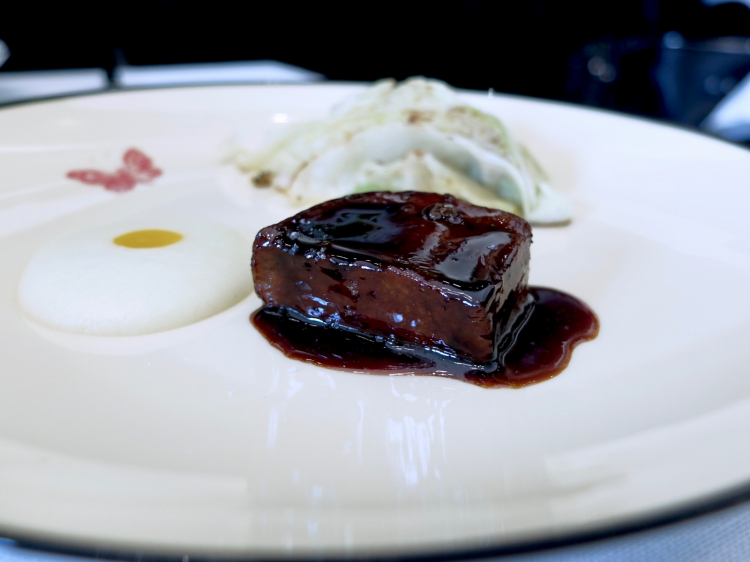
Tongue with salsa verde and grilled lettuce. They cook the tongue for 36 hours, then there’s Jerusalem artichokes, a reduction of egg yolk, salsa verde and cabbage, «prepared the way Bottura’s mother used to make it»
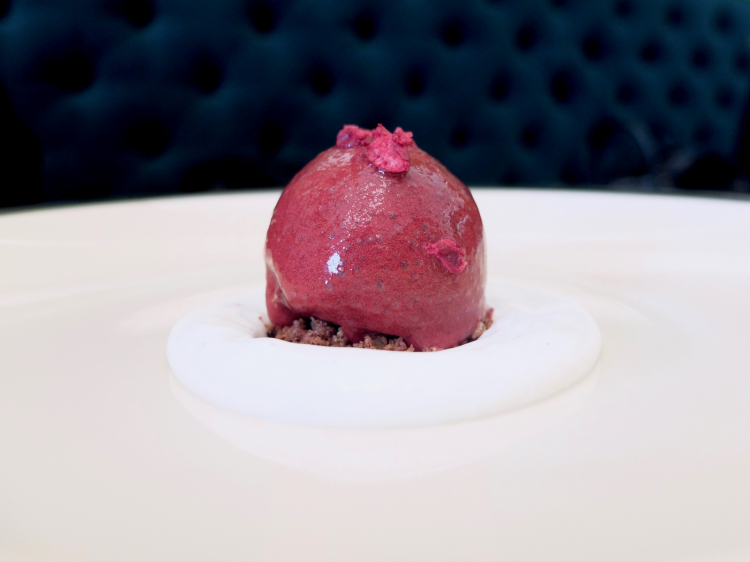
Black cherry cheesecake, a de-structured cheesecake: black cherry semifreddo, cream cheese, buckwheat crumble
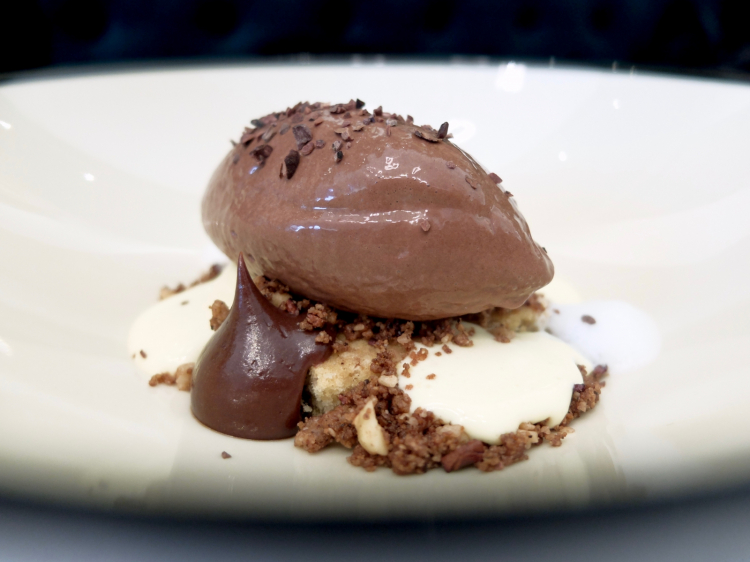
Charlie Marley, a cake prepared for Bottura’s second-born: chocolate, hazelnuts, mascarpone
Given this premise – and in a beautiful setting, you dine in a sort of jewel, surrounded by art and beauty – it’s easy to make a pure culinary offer more than convincing. During our lunch, the
Tostada di palamita (marinated palamita in a Mexican tortilla) was fabulous, the tortellini were delicious, the
Tongue with salsa verde and grilled lettuce was fantastic, and the
Taka Bun was a treat… Every dish was excellent. It’s not the great cuisine you’ll find in Modena, but it’s a cuisine that has grown up.
Translated into English by Slawka G. Scarso